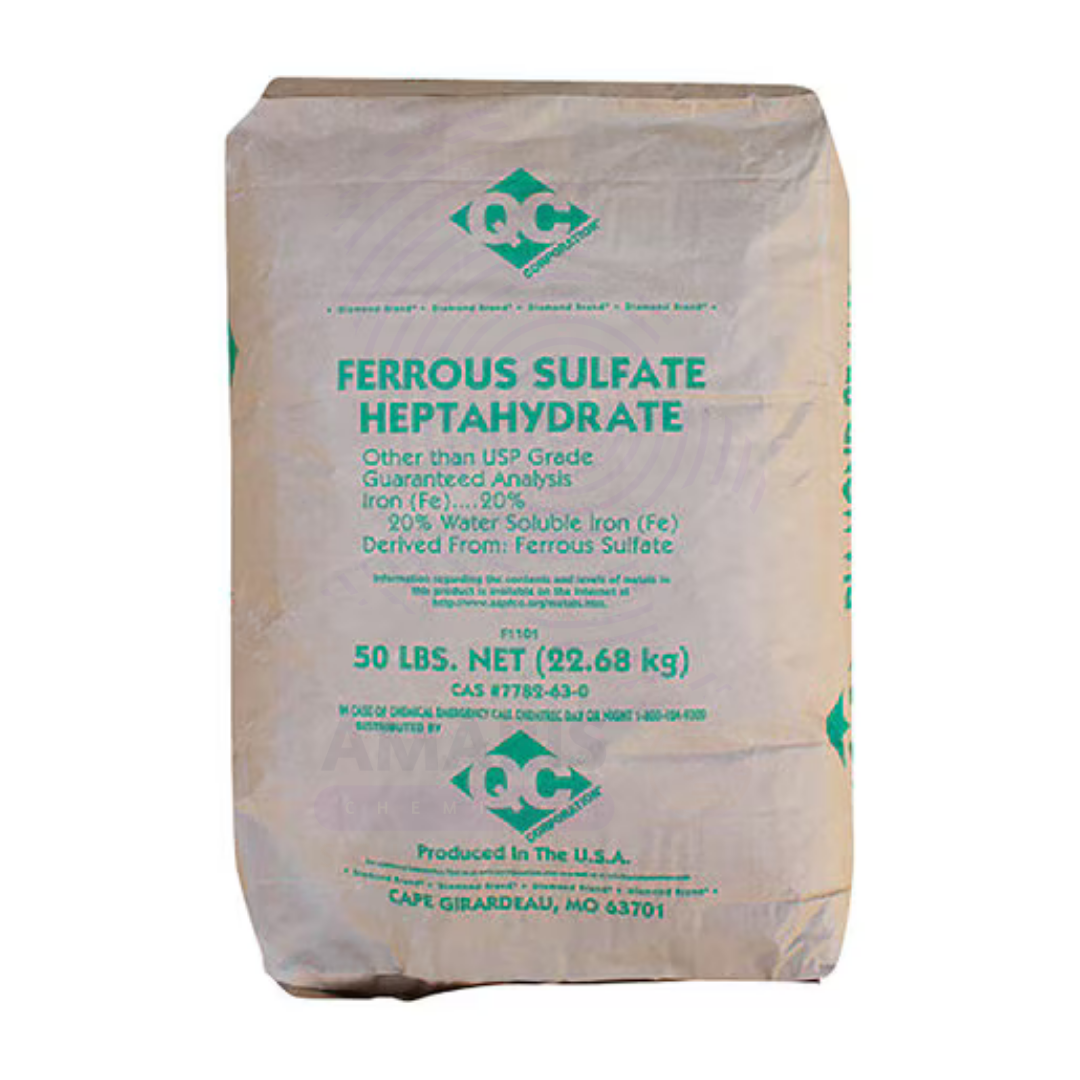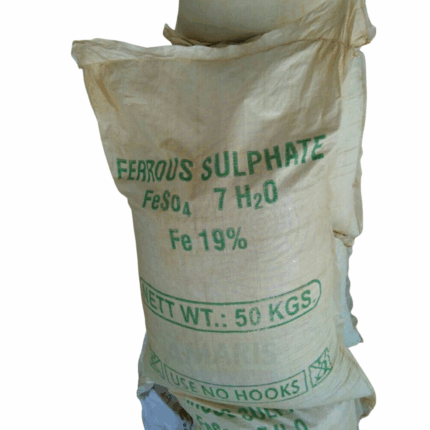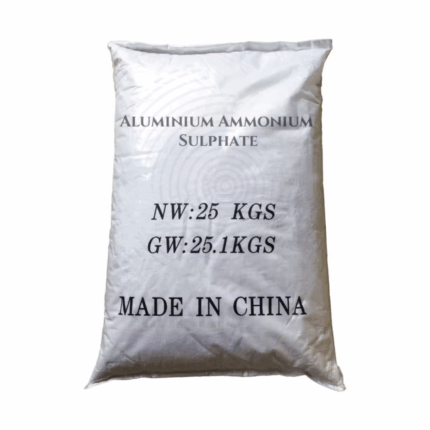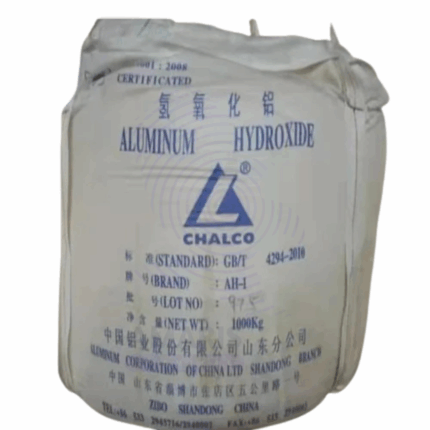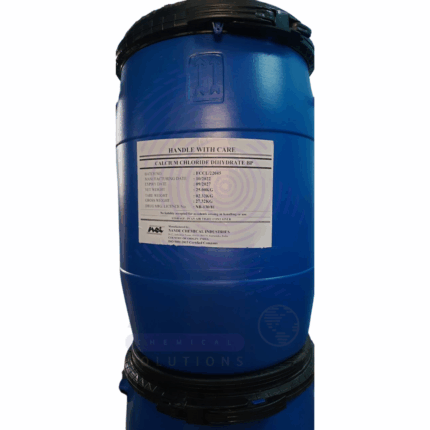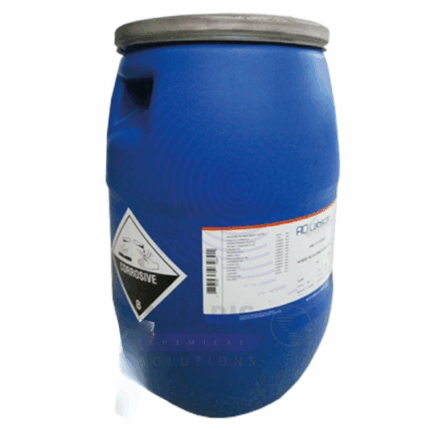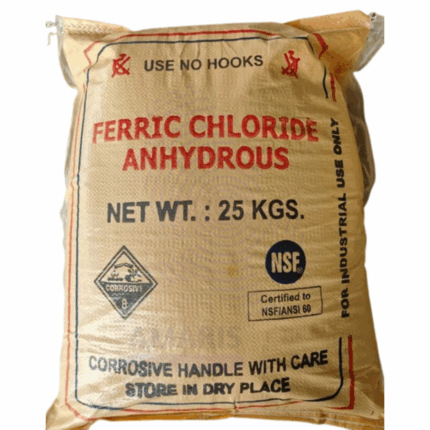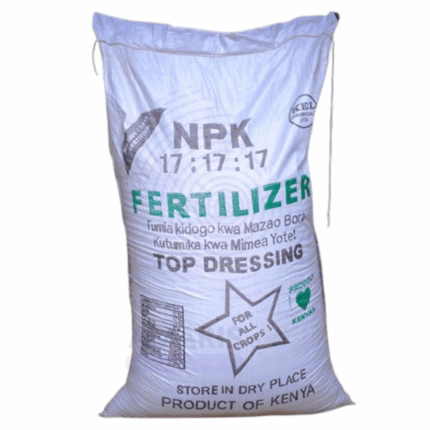“Aluminum Ammonium Sulphate” has been added to your cart. View cart
Ferrous Sulphate Heptahydrate
$ 2.00 Original price was: $ 2.00.$ 1.01Current price is: $ 1.01.
Whatsapp Order
Ferrous Sulphate Heptahydrate, also known as iron(II) sulfate heptahydrate, is a pale green crystalline solid containing seven molecules of water of crystallization (FeSO₄·7H₂O). It is a widely used inorganic iron compound characterized by its high iron content (approximately 20% Fe) and good solubility in water. This hydrated salt is commonly used in agriculture, pharmaceuticals, water treatment, and various industrial processes. The heptahydrate form is preferred for many applications due to its stability, ease of handling, and cost-effectiveness.
Categories: Animal Feed Additives, Coagulants and Flocculants, Fertilizers, Nutraceutical Ingredients (pharmaceutical), Nutrient Supplements
Tags: Agricultural Fertilizer, Ferrous Sulphate Heptahydrate, FeSO4·7H2O, Iron Supplement, Nutritional supplement, Pharmaceutical Grade, Water treatment chemical
Description
Table of Contents
Toggle
Ferrous Sulphate Heptahydrate
Primary Uses
- Agriculture and Fertilizers
- Used as an iron micronutrient in soil and foliar fertilizers to correct iron deficiency chlorosis in plants.
- Enhances plant growth, chlorophyll production, and crop yields especially in alkaline or calcareous soils.
- Employed in the preparation of iron chelates and micronutrient blends for controlled release.
- Pharmaceuticals and Nutritional Supplements
- Used as an iron source in the treatment and prevention of iron deficiency anemia.
- Formulated into oral liquid syrups, tablets, and capsules for human and veterinary use.
- Favored for its bioavailability and relatively low toxicity compared to other iron salts.
- Water and Wastewater Treatment
- Acts as a coagulant and flocculant for removal of suspended solids, phosphates, and heavy metals.
- Used for odor control and reduction of hydrogen sulfide in sewage treatment plants.
- Helps precipitate arsenic and other contaminants, improving water quality.
- Industrial Applications
- Used in the manufacture of pigments, dyes, inks, and iron-based chemicals.
- Acts as a reducing agent in various chemical syntheses and metal surface treatments.
- Used in textile dyeing and leather tanning processes.
Secondary Uses
- Food Industry
- Employed as a food additive for iron fortification in cereals, flour, and animal feed under regulated conditions.
- Used as a colorant or stabilizer in some food processing applications.
- Cosmetics and Personal Care
- Occasionally used as a pigment or iron source in cosmetic formulations.
- Laboratory and Analytical Uses
- Used as a reagent in chemical analysis for iron determination and other assays.
- Acts as a reducing agent in various laboratory procedures.
PRODUCT KEY FEATURES
- Basic Identification Attributes
- Chemical Name (IUPAC): Iron(II) sulfate heptahydrate
- Common/Trade Name: Ferrous Sulphate Heptahydrate
- CAS Number: 7782-63-0
- HS Code: 2833.29.00
- Molecular Formula: FeSO₄·7H₂O
- Synonyms: Green vitriol, Copperas, Iron(II) sulfate 7-hydrate
- Physical & Chemical Properties
- Physical State: Pale green crystalline solid
- Odor: Slight sulfurous odor
- Solubility: Soluble in water (~48 g/100 mL at 20°C), insoluble in alcohol
- Melting Point: Decomposes above 64°C (loss of crystallization water)
- pH (aqueous solution): Acidic, approximately 3.5 to 4.5
- Stability: Stable under dry conditions; gradually oxidizes to ferric sulfate upon exposure to air and moisture
- Safety & Hazard Attributes
- Hazard Class (GHS): Skin and eye irritant
- Toxicity: Moderate toxicity; ingestion in high doses can cause iron poisoning
- Exposure Limits: No specific OSHA PEL; dust control recommended
- NFPA Ratings: Health – 2; Flammability – 0; Reactivity – 1
- Storage & Handling Attributes
- Storage Conditions: Store in a cool, dry, well-ventilated area away from moisture and strong oxidizers
- Container Type: Plastic drums, bags, or bulk containers with moisture-proof lining
- Shelf Life: 1–2 years if stored properly
- Handling Precautions: Avoid dust formation and inhalation; prevent contact with skin and eyes
- Regulatory & Compliance Attributes
- FDA Status: Approved as a food additive and nutritional supplement under regulated conditions
- REACH Registration: Registered for industrial and pharmaceutical use in EU
- Usage Restrictions: Maximum allowable concentrations regulated for food and pharma use
- Environmental & Health Impact
- Biodegradability: Inorganic compound; not biodegradable but environmentally stable
- Ecotoxicity: Low to moderate toxicity to aquatic organisms; avoid release to water bodies
- Bioaccumulation: Not expected to bioaccumulate significantly
- Carcinogenicity/Mutagenicity: Not classified as carcinogenic or mutagenic
SAFETY HANDLING PRECAUTIONS
Safety Handling Precautions
- Personal Protective Equipment (PPE):
- Protective gloves (nitrile or latex)
- Safety goggles or face shield
- Dust mask or respirator in dusty environments
- Protective clothing or lab coat
- Handling Guidelines:
- Use in well-ventilated areas or under local exhaust ventilation
- Avoid inhalation of dust and prolonged skin contact
- Prevent dust accumulation and spills
- Storage Measures:
- Keep containers tightly sealed and dry
- Store away from moisture, acids, and strong oxidizers
- Protect from heat and direct sunlight
- Hygiene Practices:
- Wash hands thoroughly after handling
- Avoid eating, drinking, or smoking during handling
- Clean work surfaces and equipment regularly
First Aid Measures
- Inhalation:
- Move to fresh air immediately
- Seek medical attention if respiratory irritation or distress occurs
- Skin Contact:
- Wash thoroughly with soap and water
- Remove contaminated clothing
- Seek medical advice if irritation develops
- Eye Contact:
- Rinse eyes with plenty of water for at least 15 minutes
- Seek medical attention if irritation persists
- Ingestion:
- Rinse mouth with water
- Do not induce vomiting unless instructed by medical personnel
- Seek immediate medical attention in case of large ingestion
Firefighting Measures
- Fire Hazards:
- Non-flammable, but may release sulfur oxides and iron oxides upon decomposition at high temperatures
- Extinguishing Media:
- Use water spray, foam, dry chemical, or carbon dioxide (CO₂)
- Special Precautions:
- Firefighters should wear protective clothing and self-contained breathing apparatus if exposed to fumes
- Decomposition Products:
- Sulfur oxides (SOx), iron oxides, and other toxic gases under fire conditions
- Sulfur oxides (SOx), iron oxides, and other toxic gases under fire conditions
Related products
Aluminum Ammonium Sulphate
Aluminum ammonium sulphate, commonly known as ammonium alum or ammonium aluminum sulfate, is a crystalline chemical compound consisting of aluminum, ammonium, and sulfate ions. It typically appears as a colorless or white crystalline solid with astringent properties. It is widely used for its excellent coagulating, clarifying, and antiseptic properties. Aluminum ammonium sulphate finds applications in water purification, cosmetics, food processing, textile dyeing, and pharmaceuticals. Its ability to precipitate impurities and act as a mordant makes it invaluable in industries requiring precise control of chemical reactions, such as in the preparation of baking powder and fireproof textiles.
Aluminum hydroxide
Aluminum Hydroxide, chemically known as Al(OH)₃, is a white, odorless, and odorless powder or gelatinous substance. It is widely used in pharmaceuticals as an antacid to neutralize stomach acid and relieve indigestion and heartburn. Beyond healthcare, aluminum hydroxide is a crucial component in water purification, fire retardants, and as a precursor or filler in various industrial applications. It functions as a flame retardant by releasing water upon heating, thus cooling the material and diluting flammable gases. Due to its amphoteric nature, it can react both as an acid and base, enhancing its versatility. Aluminum hydroxide is often utilized in manufacturing aluminum salts and in producing aluminum oxide.
Calcium Chloride Dihydrate
Calcium Chloride Dihydrate (CaCl₂·2H₂O) is a hydrated form of calcium chloride, appearing as white crystalline granules or flakes containing two molecules of water of crystallization. It is highly soluble in water and exhibits strong hygroscopic and deliquescent properties. This compound is widely used in industrial, pharmaceutical, food, and agricultural sectors due to its moisture absorption, de-icing, dust control, and calcium supplementation capabilities. Compared to anhydrous calcium chloride, the dihydrate form has lower hygroscopicity but is easier to handle and store.
Disodium Hydrogen Phosphate
Disodium Hydrogen Phosphate, also known as sodium phosphate dibasic, is an inorganic salt widely used as a buffering agent, emulsifier, and food additive. It appears as a white, odorless crystalline powder or granules that are highly soluble in water and alkaline in nature. It plays a crucial role in maintaining pH balance, stabilizing formulations, and supplying essential sodium and phosphate ions in various industries including food, pharmaceuticals, water treatment, and agriculture.
Ferric Chloride Anhydrous
Ferric Chloride Anhydrous (FeCl₃) is a dark brown to black crystalline solid with a metallic luster. It is a highly corrosive, hygroscopic inorganic salt widely used as a chemical reagent, catalyst, and coagulant. In its anhydrous form, ferric chloride is free of water and has a high purity of approximately 98%. It readily dissolves in water, releasing heat and producing acidic solutions. Ferric chloride is valued for its strong Lewis acid properties, making it effective in a variety of industrial, laboratory, and environmental applications. It is commonly supplied as a solid crystalline powder or lumps and should be handled with care due to its corrosive nature.
Ferrous Sulphate Dried 150 Mesh
Ferrous Sulphate Dried 150 Mesh is a finely ground, dried form of ferrous sulfate (iron(II) sulfate) with a particle size passing through a 150 mesh sieve. It appears as pale green to light green crystalline granules or powder. This iron salt is widely used as a nutritional supplement, industrial chemical, and water treatment agent due to its high iron content (typically around 32-33% Fe) and enhanced solubility compared to the hydrated forms. The dried form improves stability and shelf life by reducing moisture content, making it suitable for applications in agriculture, pharmaceuticals, food fortification, and environmental treatment processes.
NPK 17 17 17
NPK 17 17 17 is a balanced, water-soluble fertilizer containing three essential macronutrients: Nitrogen (N), Phosphorus (P), and Potassium (K), each at 17% concentration. This balanced formula supports overall plant growth by providing vital nutrients for root development, flowering, and fruiting. It is commonly used in various agricultural and horticultural applications to optimize crop yield and quality.
Poly Aluminum Chloride (PAC)
Poly Aluminum Chloride (PAC) is an inorganic polymer coagulant used extensively for water treatment and purification. It is a highly efficient flocculating agent, derived from aluminum salts and partially neutralized with chloride, forming polymerized aluminum complexes. PAC is preferred over traditional alum for its rapid floc formation, broader pH range, and lower sludge production. Available in both liquid and powder forms, it is widely applied in municipal, industrial, and commercial sectors for clarification, separation, and purification processes.


 Preservatives(food)
Preservatives(food) Flavor Enhancers
Flavor Enhancers Acidulants
Acidulants Sweeteners
Sweeteners Antioxidants
Antioxidants Colorants(food)
Colorants(food) Nutraceutical Ingredients (food)
Nutraceutical Ingredients (food) Nutrient Supplements
Nutrient Supplements Emulsifiers
Emulsifiers
 Collectors
Collectors Dust Suppressants
Dust Suppressants Explosives and Blasting Agents
Explosives and Blasting Agents Flocculants and Coagulants
Flocculants and Coagulants Frothers
Frothers Leaching Agents
Leaching Agents pH Modifiers
pH Modifiers Precious Metal Extraction Agents
Precious Metal Extraction Agents
 Antioxidants(plastic)
Antioxidants(plastic) Colorants (Pigments, Dyes)
Colorants (Pigments, Dyes) Fillers and Reinforcements
Fillers and Reinforcements Flame Retardants
Flame Retardants Monomers
Monomers Plasticizers
Plasticizers Polymerization Initiators
Polymerization Initiators Stabilizers (UV, Heat)
Stabilizers (UV, Heat)
 Antifoaming Agents
Antifoaming Agents Chelating Agents
Chelating Agents Coagulants and Flocculants
Coagulants and Flocculants Corrosion Inhibitors
Corrosion Inhibitors Disinfectants and Biocides
Disinfectants and Biocides Oxidizing Agents
Oxidizing Agents pH Adjusters
pH Adjusters Scale Inhibitors( water)
Scale Inhibitors( water)
 Antioxidants(cosmetic)
Antioxidants(cosmetic) Emollients
Emollients Fragrances and Essential Oils
Fragrances and Essential Oils Humectants
Humectants Preservatives
Preservatives Surfactants(cosmetic)
Surfactants(cosmetic) Thickeners
Thickeners UV Filters
UV Filters
 Fertilizers
Fertilizers Soil Conditioners
Soil Conditioners Plant Growth Regulators
Plant Growth Regulators Animal Feed Additives
Animal Feed Additives Biostimulants
Biostimulants Pesticides (Herbicides, Insecticides, Fungicides)
Pesticides (Herbicides, Insecticides, Fungicides)
 Active Pharmaceutical Ingredients (APIs)
Active Pharmaceutical Ingredients (APIs) Excipients
Excipients Solvents(pharmaceutical)
Solvents(pharmaceutical) Antibiotics
Antibiotics Antiseptics and Disinfectants
Antiseptics and Disinfectants Vaccine Adjuvants
Vaccine Adjuvants Nutraceutical Ingredients (pharmaceutical)
Nutraceutical Ingredients (pharmaceutical) Analgesics & Antipyretics
Analgesics & Antipyretics
 Analytical Reagents
Analytical Reagents Solvents(lab)
Solvents(lab) Chromatography Chemicals
Chromatography Chemicals Spectroscopy Reagents
Spectroscopy Reagents microbiology-and-cell-culture-reagents
microbiology-and-cell-culture-reagents Molecular Biology Reagents
Molecular Biology Reagents Biochemical Reagents
Biochemical Reagents Inorganic and Organic Standards
Inorganic and Organic Standards Laboratory Safety Chemicals
Laboratory Safety Chemicals Specialty Laboratory Chemicals(Special Laboratory Equipment)
Specialty Laboratory Chemicals(Special Laboratory Equipment)
 Demulsifiers
Demulsifiers Hydraulic Fracturing Fluids
Hydraulic Fracturing Fluids Scale Inhibitors(oil)
Scale Inhibitors(oil) Surfactants(oil)
Surfactants(oil) Drilling Fluids
Drilling Fluids
 Dyes and Pigments
Dyes and Pigments Bleaching Agents
Bleaching Agents Softening Agents
Softening Agents Finishing Agents
Finishing Agents Antistatic Agents
Antistatic Agents
 Admixtures
Admixtures Waterproofing Agents
Waterproofing Agents Sealants and Adhesives
Sealants and Adhesives Curing Compounds
Curing Compounds Concrete Repair Chemicals
Concrete Repair Chemicals Anti-Corrosion Coatings
Anti-Corrosion Coatings
 Surfactants(cleaning)
Surfactants(cleaning) Builders
Builders Enzymes
Enzymes Solvents (Cleaning)
Solvents (Cleaning) Fragrances
Fragrances
 Electronic Chemicals
Electronic Chemicals Catalysts
Catalysts Lubricants
Lubricants Photographic Chemicals
Photographic Chemicals Refrigerants
Refrigerants Automotive chemicals
Automotive chemicals Pyrotechnic Chemicals
Pyrotechnic Chemicals
 Biodegradable Surfactants
Biodegradable Surfactants Bio-based Solvents
Bio-based Solvents Renewable Polymers
Renewable Polymers Carbon Capture Chemicals
Carbon Capture Chemicals Wastewater Treatment Chemicals
Wastewater Treatment Chemicals
 Pigments
Pigments Solvents(paint)
Solvents(paint) Specialty Coatings
Specialty Coatings Binders/Resins
Binders/Resins Additives
Additives Driers
Driers Anti-Corrosion Agents
Anti-Corrosion Agents Functional Coatings
Functional Coatings Application-Specific Coatings
Application-Specific Coatings
 Fresh Herbs
Fresh Herbs Ground Spices
Ground Spices Whole Spices
Whole Spices Spice Blends
Spice Blends Dried Herbs
Dried Herbs
 Leavening Agents
Leavening Agents Dough Conditioners
Dough Conditioners Flour Treatments
Flour Treatments Fat Replacers
Fat Replacers Decoratives
Decoratives Preservatives(baking)
Preservatives(baking)
 Plasticizers & Softeners
Plasticizers & Softeners Reinforcing Agents
Reinforcing Agents Adhesion Promoters
Adhesion Promoters Vulcanizing Agents
Vulcanizing Agents Antidegradants
Antidegradants Blowing Agents
Blowing Agents Fillers & Extenders
Fillers & Extenders Accelerators & Retarders
Accelerators & Retarders